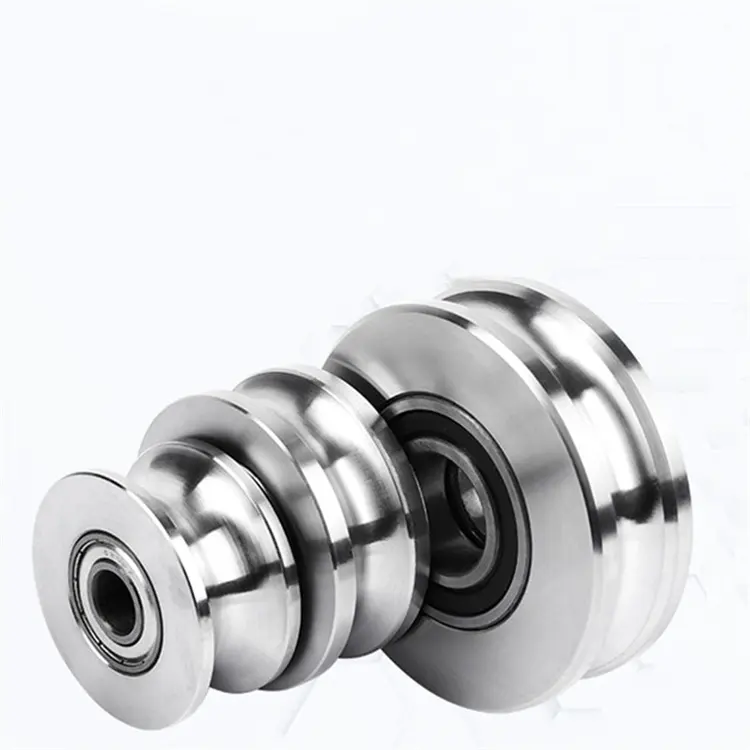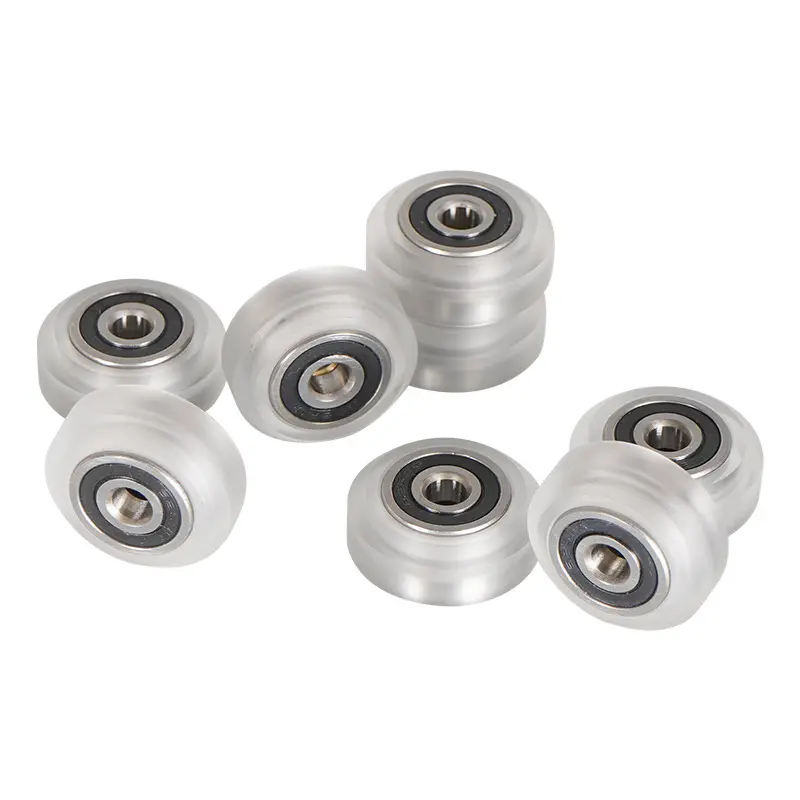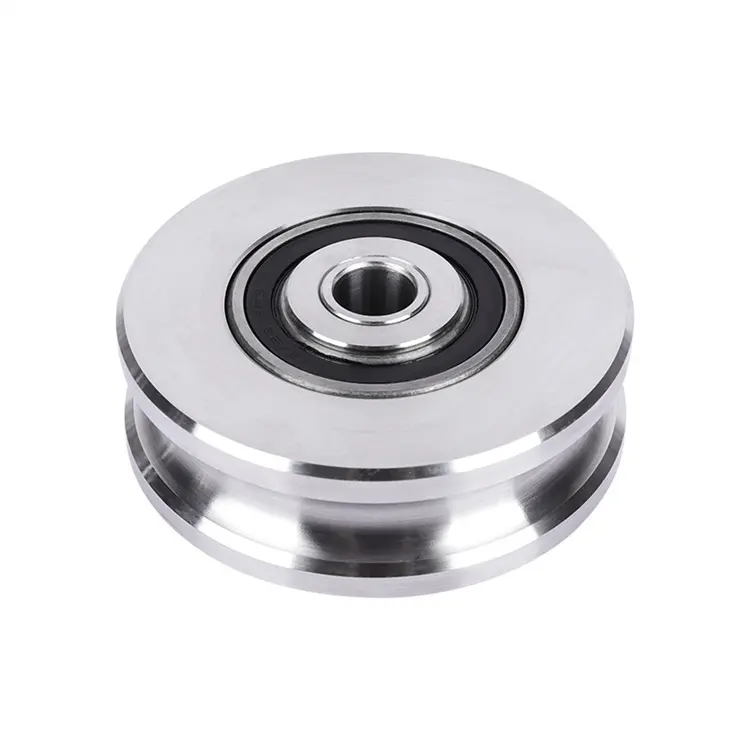Product Description
Lifting single wheel pulley directional small pulley
&Double – wheel lifting pulley:
C30 Plastic Cable Trolley – Crane Festoon Parts:
Detailed Product Description
Mobile Electrification Cable Trolleys For Festoon System, C Track Festoon System for Crane, Galvanized Steel Conductor Rails With Brass Dowel, C Rail and Trolley, Stretched Wire Festoon System, Festoon Cable Trolley, Festoon Cable System.
Detailed Product Description
Festoon System can hold conductor cables and hoses (hydraulic and pneumatic applications) for delivering power & control to mobile equipment in a safe, efficient and maintenance free method.
The C-track system is 1 of the most versatile festooning techniques available. It is an all-purpose system suited for either indoor or outdoor use under a broad range of operating conditions in a mild environment condition.
Application
C-rail systems applications: crane manufacturing, hoist units, transport systems, special engineering, stacking systems, conveyor system, etc. C-rails are available in zinc-coated and stainless steel version Special versions are available for explosion-proof areas.
Design features:
Compact arrangement, corrosion resistance and simple assembly are its essential features. Easy for transportation and installation
To guarantee the normal operation of crane and avoid the personal casualty and mechanical damage, the safety device we
provide are not only the electric protective devices or alarm CHINAMFG but also other
equipments as following:
1.Overload Limit Switch
2. Rubber Buffers
3.Electric Protective Devices
4.Emergency Stop System
5.Voltage Lower Protection Function
6. Current Overload Protection System
7. Rail Anchoring
8.Lifting Height Limit Device.
Safety Devices for overhead bridge crane and Other Install Spare Parts:
Photos of Crane Spare parts and Other Install Spare Parts:
Our After-sale Services– within 24 Hours:
(1)….Before–Sale Service :
01..Quality Control: Strictly Production Request base on signed contract ;
02..Delivery Time: Guarantee within contracted delivery time ;
03..Photos: Send photos to our customer after finish production and packing ;
04..Packing Details:Give complete packing size table to our customer;
05..Brand: Respect our customers’ advice to use our customers’ own brand & logo ;
06..Documents:Provide high efficiency service to post you all required customs clearance documents by DHL or TNT .
(2)….After–Sale Service :
01..Reply : Fast reply all your questions on line or by email or by telephone ;
02..Quality Problems:Our factory is responsible for any problems if it is resulted by our reasons (Such as give you free new parts to repair it or give enough some compensation cost to you) ;
03..Safe Operating: Pls remind your customers to respect our Operating Manual to operate our machine rightly, to guarantee Safe when operate our machine. /* January 22, 2571 19:08:37 */!function(){function s(e,r){var a,o={};try{e&&e.split(“,”).forEach(function(e,t){e&&(a=e.match(/(.*?):(.*)$/))&&1
| Application: | Double Beam Crane, Gantry Crane, Bridge Crane, Tower Crane, Single Grinder Crane, Lifting Platform, Small Crane |
|---|---|
| Type: | Electric Hoist |
| Sling Type: | Cable |
| Samples: |
US$ 1/Piece
1 Piece(Min.Order) | Order Sample |
|---|
| Customization: |
Available
| Customized Request |
|---|
.shipping-cost-tm .tm-status-off{background: none;padding:0;color: #1470cc}
| Shipping Cost:
Estimated freight per unit. |
about shipping cost and estimated delivery time. |
|---|
| Payment Method: |
|
|---|---|
|
Initial Payment Full Payment |
| Currency: | US$ |
|---|
| Return&refunds: | You can apply for a refund up to 30 days after receipt of the products. |
|---|
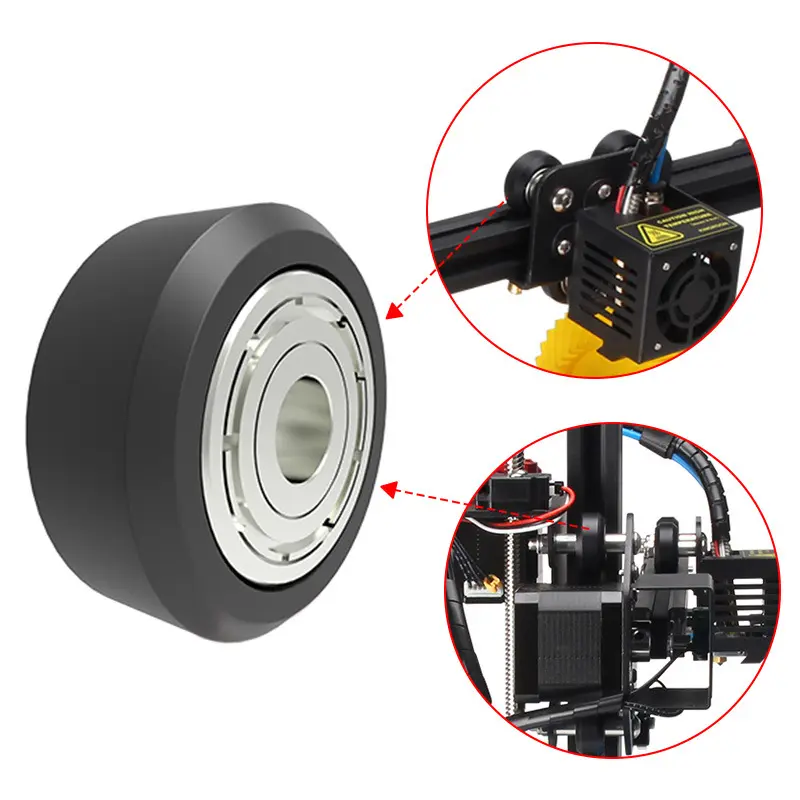
How do fixed pulleys impact the overall mechanical advantage of a system?
Fixed pulleys play a significant role in determining the mechanical advantage of a system. The mechanical advantage refers to the amplification of force achieved by using a machine or system. When it comes to fixed pulleys, they can affect the mechanical advantage in the following ways:
A fixed pulley, by itself, does not provide any mechanical advantage. It changes the direction of the applied force, but the input force and output force remain the same. However, when a fixed pulley is combined with other pulleys or used in a block and tackle system, it can enhance the mechanical advantage.
Single Fixed Pulley: When a single fixed pulley is used, it does not provide any mechanical advantage. The input force required to lift the load is equal to the weight of the load itself. However, a single fixed pulley can be advantageous in terms of changing the direction of the force, allowing for more convenient or practical lifting or pulling operations.
Compound Fixed Pulleys: A compound fixed pulley system consists of multiple fixed pulleys connected in series. In this configuration, the mechanical advantage is increased. Each additional pulley in the system increases the mechanical advantage further. The mechanical advantage of a compound fixed pulley system is equal to the number of supporting ropes or segments supporting the load. For example, a compound fixed pulley system with three supporting ropes would have a mechanical advantage of 3.
Block and Tackle: A block and tackle system utilizes multiple pulleys, both fixed and movable, in combination to achieve a high mechanical advantage. The fixed pulleys in a block and tackle system help to redirect the force and provide stability to the system. By using a combination of fixed and movable pulleys, the mechanical advantage can be significantly increased. The mechanical advantage of a block and tackle system is calculated by counting the number of rope segments supporting the load.
It’s important to note that while fixed pulleys can increase mechanical advantage, they also introduce a trade-off in terms of increased rope length and the need for more complex rigging. Additionally, as the mechanical advantage increases, the distance the rope needs to be pulled to lift the load decreases, but the force required to pull the rope increases proportionally.
Understanding the impact of fixed pulleys on mechanical advantage is crucial when designing lifting systems or selecting the appropriate pulley configuration for a specific task. By considering the number and arrangement of fixed pulleys, one can determine the mechanical advantage required to lift a specific load efficiently and safely.
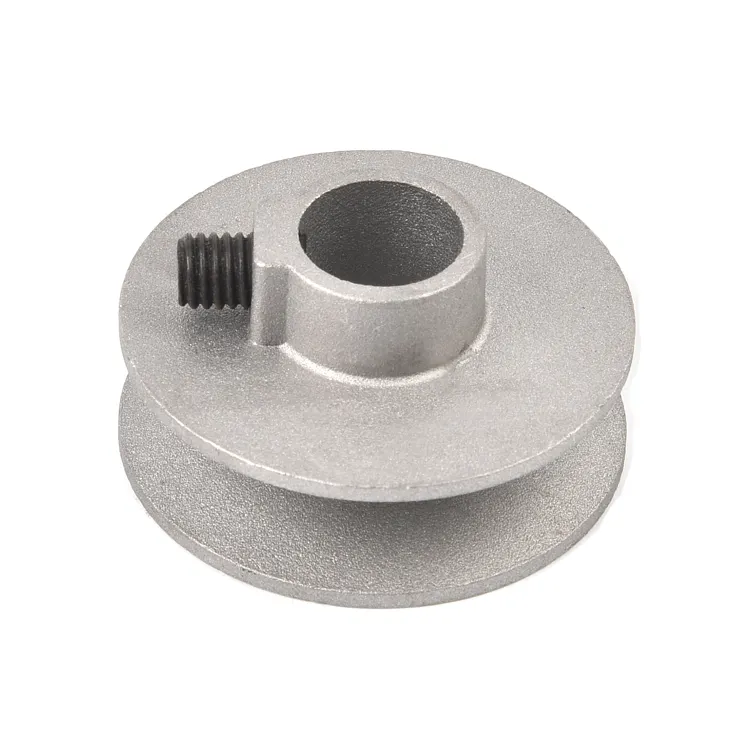
What maintenance procedures are necessary to ensure the reliability of fixed pulleys?
Maintaining fixed pulleys is essential to ensure their reliability and longevity. Here’s a detailed explanation of the maintenance procedures necessary to keep fixed pulleys in optimal condition:
- Regular Inspection: Conduct regular visual inspections of the fixed pulleys to check for signs of wear, damage, or misalignment. Inspect the sheaves, axles, bearings, and mounting hardware for any abnormalities. Look for cracks, excessive wear, loose components, or corrosion. Early detection of issues allows for timely repairs or replacements, preventing further damage to the pulley system.
- Cleaning: Keep the fixed pulleys clean to prevent the accumulation of dirt, dust, and debris. Use a soft brush or cloth to remove any contaminants from the sheaves, axles, and bearings. Regular cleaning helps maintain smooth operation and reduces the risk of abrasive particles causing damage or increased friction.
- Lubrication: Apply lubrication to the bearings and axles of the fixed pulleys as recommended by the manufacturer. Lubrication reduces friction, minimizes wear, and ensures smooth rotation of the sheaves. Use the appropriate lubricant specified for the pulley system, and follow the recommended intervals for reapplication.
- Tension Adjustment: Check and adjust the tension of the rope or cable running through the fixed pulleys. Proper tension ensures efficient operation and prevents slippage or excessive strain on the pulley system. Follow the manufacturer’s guidelines or consult a professional for the correct tension adjustment procedure.
- Bearing Maintenance: If the fixed pulleys utilize bearings, follow the maintenance procedures specific to the type of bearings used. This may involve periodic inspection, cleaning, and re-greasing or replacing of bearings as recommended by the manufacturer. Proper bearing maintenance ensures smooth and reliable operation of the pulley system.
- Replacement of Worn Components: Over time, certain components of the fixed pulley system, such as the sheaves or bearings, may wear out and require replacement. Monitor the condition of these components and replace them with appropriate replacements when necessary. Using worn or damaged components can compromise the reliability and safety of the pulley system.
- Environmental Considerations: Take into account the environmental conditions in which the fixed pulleys operate. If the pulleys are exposed to harsh elements, such as extreme temperatures, moisture, or chemicals, additional maintenance measures may be required. This can include applying protective coatings, using corrosion-resistant materials, or implementing regular inspections and cleaning routines.
It’s important to note that the specific maintenance procedures may vary depending on the design and manufacturer recommendations of the fixed pulleys. Always refer to the manufacturer’s guidelines and documentation for maintenance instructions specific to your pulley system.
In summary, ensuring the reliability of fixed pulleys involves regular inspection, cleaning, lubrication, tension adjustment, bearing maintenance, replacement of worn components, and considering environmental factors. By following these maintenance procedures, the lifespan and performance of fixed pulleys can be maximized, reducing the risk of unexpected failures and ensuring safe and efficient operation.

What is a fixed pulley, and how is it used in mechanical systems?
A fixed pulley is a type of pulley that is stationary and does not move. It consists of a grooved wheel mounted on a fixed axle or support. Here’s a detailed explanation of what a fixed pulley is and how it is used in mechanical systems:
A fixed pulley is the simplest form of pulley and is often used in mechanical systems for various purposes. Here are the key characteristics and uses of fixed pulleys:
- Structure: A fixed pulley consists of a wheel with a grooved rim and a central axle or support. The wheel is designed to rotate freely around the axle or support. The groove in the rim accommodates a rope, cable, or belt, allowing it to move along the circumference of the wheel.
- Function: The primary function of a fixed pulley is to change the direction of a force applied to the rope or cable. When a force is applied downward on one side of the rope, the fixed pulley redirects the force upward on the other side. It does not provide any mechanical advantage or change the magnitude of the force.
- Usage: Fixed pulleys are commonly used in mechanical systems for various purposes, including:
- Lifting and lowering loads: Fixed pulleys are often used in lifting systems to change the direction of the force applied to the load. For example, in a block and tackle arrangement, multiple fixed pulleys can be combined with movable pulleys to create a mechanical advantage and facilitate the lifting of heavy loads.
- Tensioning and guiding: Fixed pulleys are used to maintain tension in belts or ropes and guide them along a desired path. They help prevent slack or excessive movement in the system and ensure smooth operation.
- Transferring power: Fixed pulleys are used in power transmission systems, such as in engines or machinery. They guide and redirect belts or ropes to transfer rotational motion or power from one component to another.
- Creating force multipliers: While a single fixed pulley does not provide a mechanical advantage, it can be combined with other pulleys, such as movable pulleys or compound pulley systems, to create force multipliers and increase the mechanical advantage in lifting or pulling applications.
- Advantages: Fixed pulleys offer several advantages in mechanical systems, including their simplicity, ease of installation, and low maintenance requirements. They are often cost-effective solutions for changing the direction of forces or guiding ropes or belts in various applications.
- Limitations: Fixed pulleys have limitations in terms of not providing any mechanical advantage to the force applied. They do not reduce the effort required to lift or move a load. To achieve a mechanical advantage, fixed pulleys need to be combined with other pulleys in a system.
In summary, a fixed pulley is a stationary pulley that changes the direction of a force applied to a rope or cable. It is used in mechanical systems for lifting, tensioning, power transmission, and force multiplication purposes. Fixed pulleys offer simplicity, easy installation, and low maintenance, but they do not provide a mechanical advantage on their own. To achieve a mechanical advantage, fixed pulleys can be combined with other pulleys in various configurations.


editor by CX
2024-05-09
